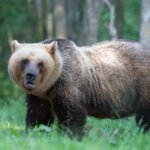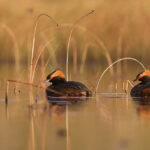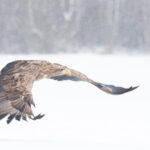Once you contribute to nature, you will soon find yourself working full time. A part of the semi-natural communities that have been gradually created by humans must learn to adapt when the human support is withdrawn. Frequently, it does not happen and biodiversity decreases.
Many species rare in Europe live in Estonian semi-natural communities—wooded meadows, including woodland butterflies like the Clouded Apollo (Parnassius mnemosyne), Large Copper (Lycaena dispar), Scarce Fritillary (Euphydryas maturna), Marsh Fritillary (Euphydryas aurinia), Woodland Brown (Lopinga achine), Scarce Heath (Coenonympha hero).
The situation of these species that are endangered elsewhere and under protection here is currently good in Estonia. However, students of nature are greatly concerned that the society together with the politicians does not acknowledge the importance of maintaining wooded meadows. A large quantity of those areas belong to private persons who would receive financial support for maintaining wooded meadows; it is, nonetheless, much easier to receive support for maintaining forests. Thus, the situation could change swiftly and woodland butterflies may disappear.
Studies have shown that the population of one or another species, e.g. woodland butterflies, does not go extinct as soon as a habitat has become unfit for it. In case of many longevous plants, it takes decades if not hundreds of years before the last specimens of the residual population disappear. Thus, species that could not be present in a habitat recently decreased in size due to the area’s dimensions are usually still seen there. The total amount of such species is called the extinction debt of a habitat.
It is therefore important from the point of view of butterfly diversity and abundance to preserve every meadow and keep landscapes as diverse as possible. Mowing wooded meadows increases the population size of woodland butterflies, as it also increases the diversity of plant species. The connections with grazing are not as clear—it could also decrease the biodiversity of wooded meadows. On the other hand, grazing prevents the overgrowing and perishing of semi-natural communities; this is true first and foremost for specific conditions, such as alvar grasslands and coastal meadows, and grazing is definitely necessary in those areas. At the same time, overgrazing is discouraged.







